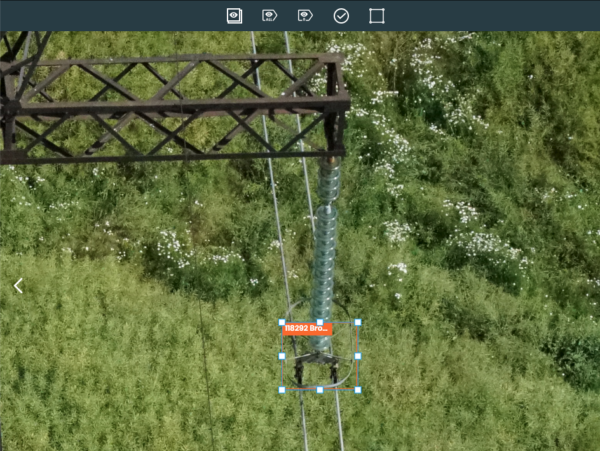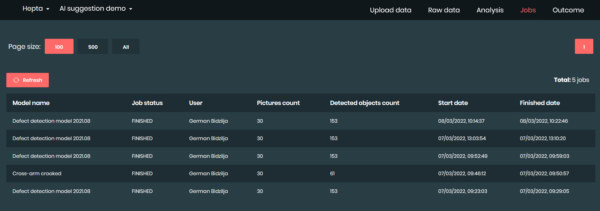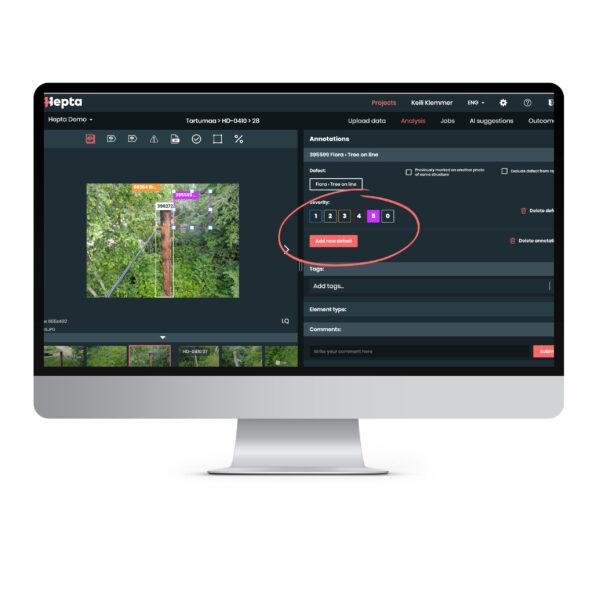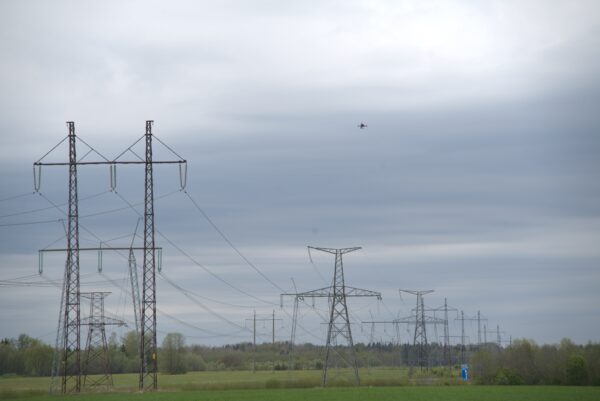Overhead line inspection is an important aspect of the day-to-day business for every electric utility company, as it is a crucial part of both preventing and fixing any interruptions in the service. Naturally, that means that these companies are quite eager to try and make these processes more efficient and that’s where AI comes in. Similarly to what we’ve seen in many other industries, AI-based solutions can prove to be very valuable for improving overhead line inspection.
Overhead power line classification
Overhead power lines are used both in transmission (upwards of 100kV) and distribution grids (between 1 kV and 69 kV), but for the sake of clarity, this article will focus on transmission overhead power lines. Transmission lines are usually classified either by their range of operating voltage or length of lines.
Overhead transmission line classification based on operating voltage
- High voltage transmission lines are usually between 100kV and 300kV and are used for transmission of bulk quantities of electric power. High voltage transmission lines are the most used of all overhead transmission power lines due to their demand and high efficiency.
- Extra high voltage lines or EHV lines range from 345 kV up to about 800 kV. EHV lines are used for long-distance, very high power transmission.
- Ultra-high voltage or UHV lines range from more than 800 kVDC and over 1000 kVAC. UHV lines are the rarest power lines in the world and serve large amounts of the population and customers.
Overhead transmission line classification based on length
- Short transmission lines generally have a length of fewer than 50 km.
- Medium transmission lines effective length is usually between 50 km and 150 km.
- Long transmission lines are usually more than 150 km long.
Common defects identified in overhead power line inspection
Due to the large number of customers usually depending on the electricity transmitted by the overhead power lines, they have to be well maintained, the surrounding corridor cleared of overgrown vegetation and regularly inspected. But as with all lines, the elements, wildlife, pollution, wear and tear cause defects to appear regardless. Most of the defects identified in overhead power line inspections can be found in either the insulators, conductors or on the towers themselves.
Insulators
Insulators are prone to contamination by environmental pollution, dust from surrounding areas (especially near highways or construction areas) and electrical breakdowns stemming from high voltage. If the insulators become contaminated, then the risk of flash-over grows rapidly. Flash-overs can destroy insulators easily and cause serious problems to the grid operators. At the same time the corona effect, enabled by the electrical breakdown of insulators can cost the network operators revenue, due to the loss of power.
Conductors
In transmission lines, the conductors are less susceptible to sagging due to high voltage but are still affected by strong winds, ageing, short circuits and lightning strikes. Loose strands and visual defects usually signal the need to either repair or replace the conductors completely.
Tower defects
Overhead power line towers are sturdy and well built by nature, thus they tend to be the least affected parts of the grid. But that does not mean that they are unaffected by defects. Over a longer time period, the towers are susceptible to corrosion and environmental damage. In some areas wildlife also causes some damage, such as being covered in bird droppings, especially in areas on the migratory bird flight paths.
AI solutions for overhead power line inspection provided by Hepta Insights
As working transmission lines are vital for sustaining the way of life we are accustomed to, all possible trouble spots and defects have to be detected well before they start affecting the grid. Hepta allows its customers to find more relevant defects, conduct quicker inspections and get a detailed overview of the state of the assets with the help of its power line inspection platform Hepta Insights. It enables the grid operators to conduct drone-based inspections, thus gathering more detailed data, and analyse it using custom-made AI models with the results shown on a GPS-based map.
Hepta builds custom and client-specific AI models based on their datasets, which look for defects the customer is most interested in. If the client has seen an increase in insulators with flash-overs or corroding towers, Hepta can create models that look for them in all of their inspection images. This enables the customer to inspect thousands of images in a couple of minutes, just by clicking on a button in Insights. Thus a long and drawn out overhead line inspection process takes minutes, not days and allows grid operators to take action quickly and based on detailed information.
In addition to that, Hepta Insights enables the grid operators to use different sensor data in their overhead line inspections. Thus we can easily detect the corona effect in insulators with the help of corona imaging. Or we can see overheating elements with the help of thermal imaging. Even predictive vegetation analysis can be performed, with the help of LiDAR point clouds. Using the best in class AI-models with different sensor data allows grid operators to not only detect more defects in overhead power lines but also enables them to prevent disruptions in the grid.





